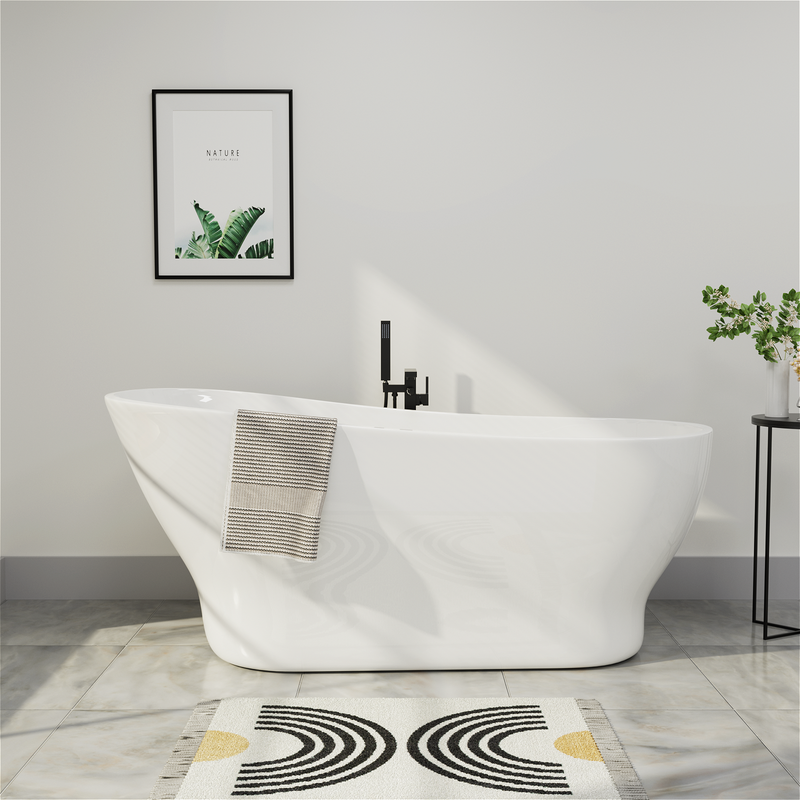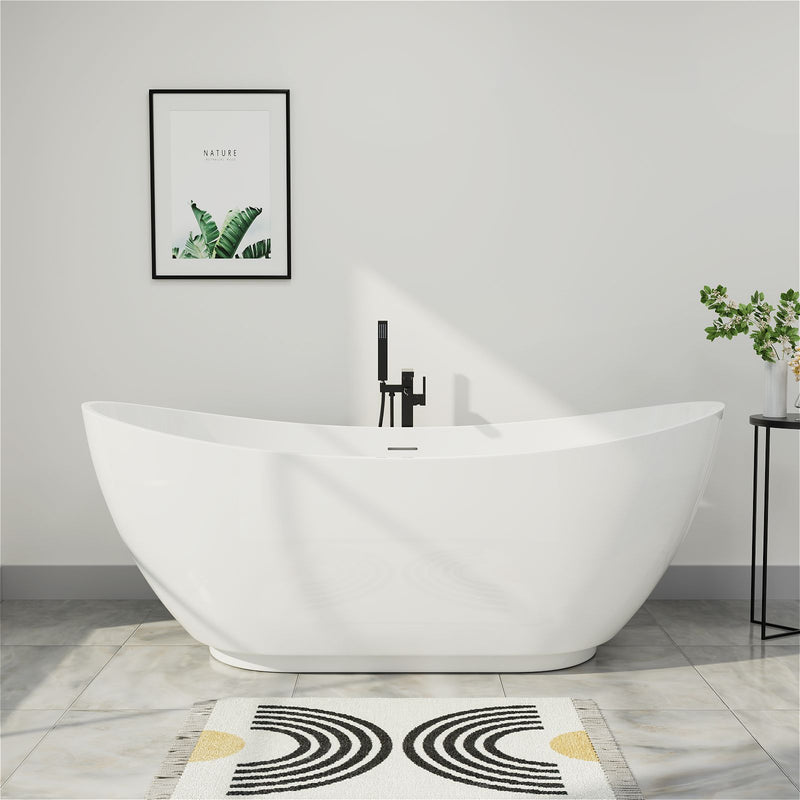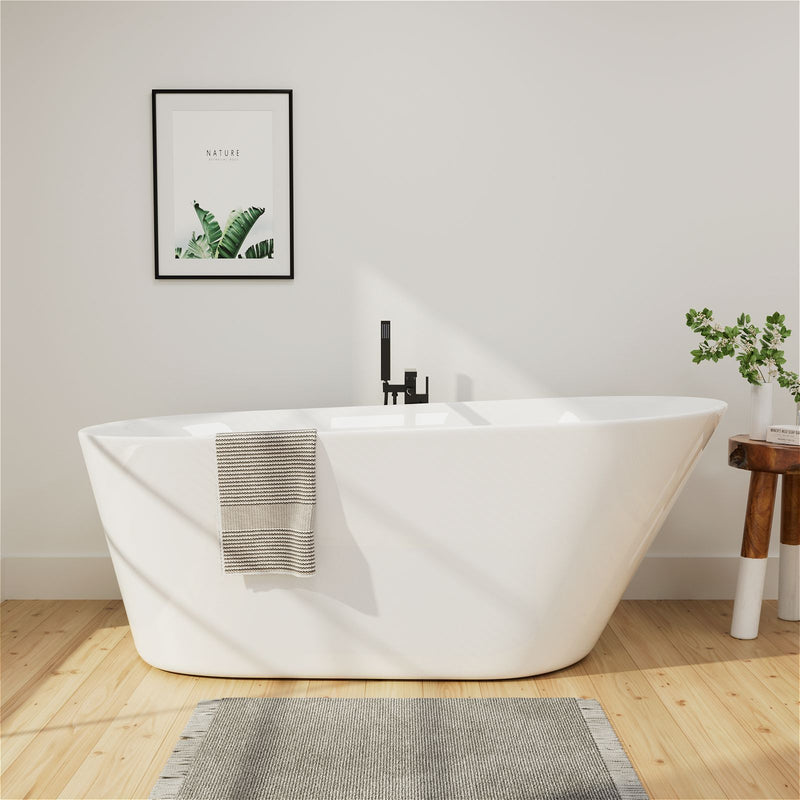A dull, cloudy acrylic bathtub can make even the cleanest bathroom feel neglected. Over time, soap scum, hard water deposits, and minor scratches accumulate on the surface, robbing it of its original luster. Unlike porcelain or fiberglass, acrylic requires specific care to maintain its shine without causing damage. The good news is that restoring brilliance to your tub doesn't necessarily require expensive professional services or harsh chemicals. With the right techniques and understanding of what causes the dullness, you can bring back that like-new shine safely and effectively. This guide will walk you through everything from diagnosing the cause of the dullness to implementing the perfect restoration strategy that protects your tub's surface while delivering remarkable results.

Understanding Why Acrylic Bathtubs Lose Their Shine
Acrylic bathtubs develop a cloudy appearance due to several factors that affect the surface layer. The most common cause is the buildup of soap residue and body oils that create a film over the acrylic surface. This film traps dirt and minerals, creating a dull barrier that light cannot penetrate effectively. Hard water presents another significant challenge, as minerals like calcium and magnesium leave behind whitish deposits that are particularly difficult to remove. These deposits don't just sit on the surface but can actually bond with the acrylic if left untreated for extended periods.
Another common issue is surface scratching from abrasive cleaners or rough cleaning tools. Even minor scratches scatter light instead of allowing it to reflect directly, creating a cloudy appearance. Environmental factors also play a role, as some cleaning products containing solvents can actually degrade the acrylic surface over time, causing it to lose its original clarity. Understanding what specifically caused your tub's dullness is the first step toward effective restoration, as different issues require slightly different approaches to achieve optimal results.
Essential Cleaning Supplies and Safety Precautions
Before beginning the restoration process, gather the appropriate supplies to ensure both effectiveness and safety. You'll need white vinegar or a specialized calcium remover for tackling hard water deposits, baking soda for gentle abrasion, and a mild dish soap for cutting through grease and soap scum. For application, have several soft microfiber cloths available, a soft-bristled brush, a spray bottle, and a bucket. For the final polishing stage, you'll need a clean, dry microfiber towel and potentially a specialized plastic polish if the surface requires extra attention.
Safety should always come first when working with cleaning products. Ensure the bathroom is well-ventilated by opening windows or running an exhaust fan, especially if using products with stronger fumes. Wear rubber gloves to protect your hands from cleaning solutions and to prevent transferring oils from your skin to the freshly cleaned surface. Place a non-slip mat in the tub if you need to stand inside while cleaning, and keep all cleaning products out of reach of children and pets. Never mix different cleaning chemicals, particularly bleach and ammonia, as this can create dangerous fumes.
Step-by-Step Deep Cleaning Process
Begin the restoration by removing all items from the bathtub and giving it a thorough rinse with warm water to loosen surface debris. For soap scum and general grime, create a cleaning paste using equal parts baking soda and water or a mild dish soap. Apply this paste generously to the entire surface using a soft cloth or sponge, working in circular motions to lift the embedded dirt. The baking soda provides gentle abrasion that helps break down the film without scratching the surface. For stubborn areas, allow the paste to sit for 10-15 minutes before continuing to scrub.

For hard water stains, white vinegar proves remarkably effective. Fill a spray bottle with undiluted white vinegar and generously apply it to the affected areas, particularly around the drain and faucet where mineral buildup tends to concentrate. Allow the vinegar to work for at least 30 minutes—you may even want to soak paper towels in vinegar and press them against vertical surfaces to maintain contact. After the vinegar has broken down the mineral deposits, use a soft-bristled brush to gently scrub the area. The combination of the acidic vinegar and gentle scrubbing will dissolve and lift the minerals without damaging the acrylic surface.
Polishing Techniques to Restore Brilliance
After deep cleaning, the true restoration of shine begins with proper polishing. Start by rinsing the tub thoroughly with cool water to remove all cleaning residue, then dry completely with a soft microfiber cloth. Any remaining water droplets can leave mineral spots when they evaporate, so thorough drying is essential. For light surface imperfections, create a polishing paste by mixing baking soda with water until it forms a thick consistency. Apply this to the surface using a soft cloth, working in small circular sections with moderate pressure.
For more significant restoration needs, consider using a specialized plastic polish designed for acrylic surfaces. These products contain ultra-fine polishing compounds that gently remove microscopic surface imperfections that cause cloudiness. Apply a small amount to a clean, soft cloth and work methodically across the entire surface, using consistent circular motions. Finish by buffing with a separate clean, dry microfiber cloth to reveal the restored shine. This process not only improves appearance but also creates a smoother surface that's more resistant to future buildup.
Preventive Maintenance to Maintain Shine
Regular maintenance is crucial for preserving your acrylic tub's renewed shine. After each use, rinse the tub with cool water to remove soap residues and minerals before they have a chance to accumulate. Once weekly, perform a light cleaning with a mild, non-abrasive cleaner specifically formulated for acrylic surfaces. Avoid letting cleaning products sit on the surface for extended periods, and never use abrasive scrubbers or harsh chemicals that can damage the finish.
Implement protective measures to extend the time between deep cleanings. Consider using a water softener if you have particularly hard water, as this will significantly reduce mineral deposition. Place mats with suction cups carefully, as dragging them across the surface can cause scratches. Similarly, avoid dropping shampoo bottles or other hard objects into the tub, as impacts can create dents and scratches that collect dirt and appear cloudy. With consistent proper care, your acrylic tub can maintain its shine for years before requiring another deep restoration.

FAQs
How often should I deep clean my acrylic bathtub?
For most households, a thorough deep cleaning every 3-4 months is sufficient to maintain the shine. If you have hard water or use the tub frequently, you may need to clean it every 2 months. Watch for visible signs of buildup or cloudiness as your indicator that cleaning is needed.
Can I use magic erasers on my acrylic tub?
While magic erasers can be effective for some stains, they are mildly abrasive and can potentially damage the acrylic surface over time, creating micro-scratches that lead to more rapid dulling. It's better to use them sparingly and only for stubborn spots rather than regular cleaning.
Why does my tub get cloudy again so quickly after cleaning?
Rapid clouding usually indicates one of three issues: using abrasive cleaners that create microscopic scratches that quickly collect dirt, not rinsing thoroughly after cleaning leaving residue, or having extremely hard water that deposits minerals quickly. Ensure you're using proper techniques, and consider a water softener if hardness is the issue.
Is it safe to use bleach on an acrylic tub?
While diluted bleach is generally safe for occasional disinfecting, regular use can degrade the acrylic surface and cause yellowing over time. If you need to disinfect, use a diluted bleach solution (1 part bleach to 10 parts water), rinse thoroughly immediately after application, and don't let it sit on the surface.
Can I use automotive wax on my acrylic tub?
It's not recommended. Automotive products may contain chemicals that can damage acrylic surfaces. Instead, use products specifically designed for acrylic tubs or make a natural polish from baking soda and water.
What's the difference between acrylic surface cloudiness and actual damage?
Cloudiness from buildup will improve with proper cleaning, while actual damage like deep scratches or crazing (fine cracks in the surface) will remain visible after cleaning. If your tub has physical damage, you may need professional repair or refinishing services.
How can I prevent scratches in my acrylic tub?
Use only soft cloths and non-abrasive cleaners, avoid dragging items across the surface, place a soft mat in the bottom if you regularly shower with abrasive products on your feet (like exfoliants with gritty textures), and keep pets' nails trimmed if they use the tub.
Conclusion
Restoring a dull acrylic bathtub to its original shine is an achievable project that can dramatically improve your bathroom's appearance. By understanding what causes cloudiness, using the proper cleaning techniques, and implementing a regular maintenance routine, you can keep your tub looking brilliant for years to come. Remember that patience and gentle methods always yield better results than aggressive approaches with abrasive tools or harsh chemicals. Your renewed bathtub will not only enhance your daily bathing experience but also contribute to your home's overall appeal and value. With the knowledge from this guide, you're equipped to tackle tub cloudiness effectively and maintain that like-new shine long-term.





